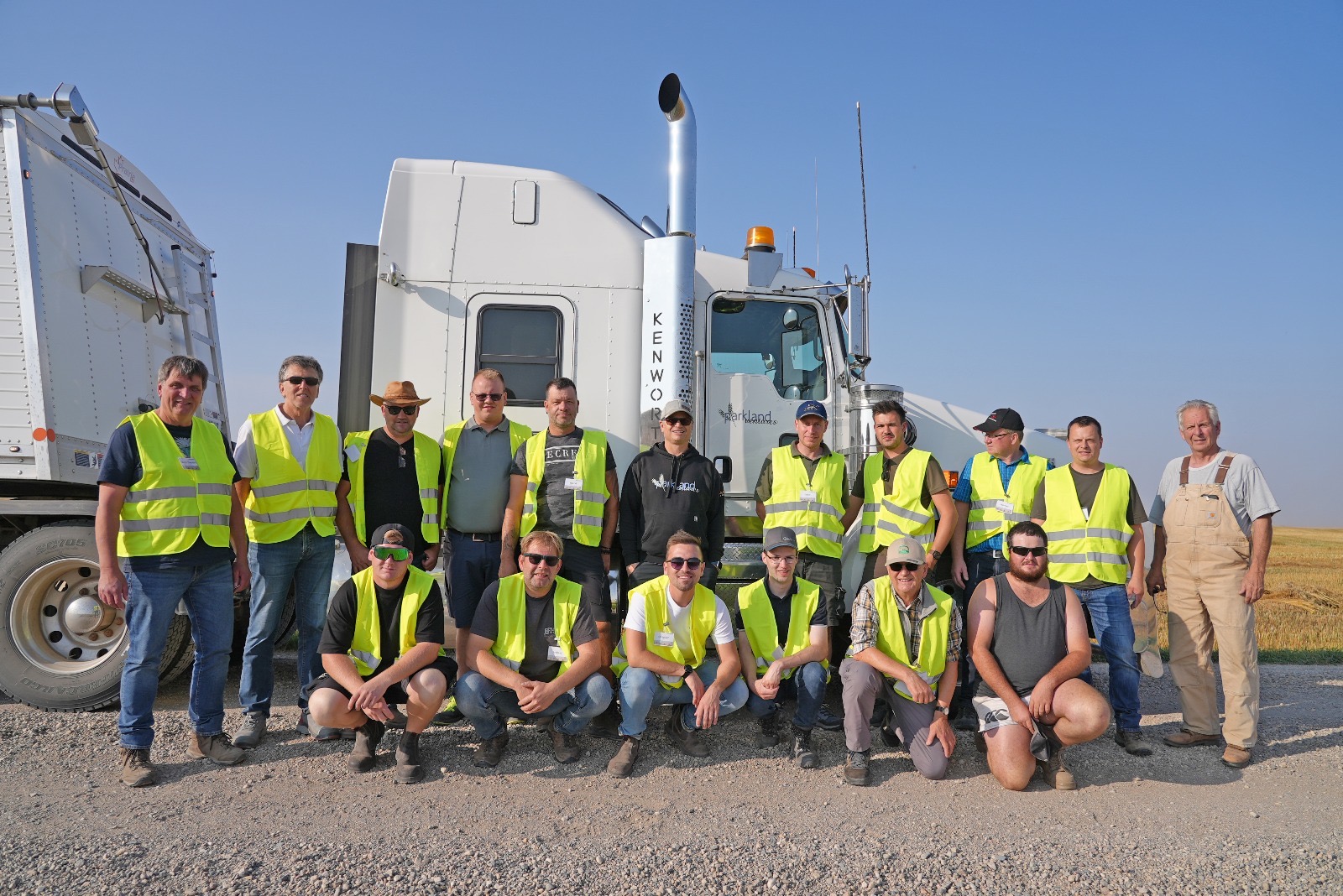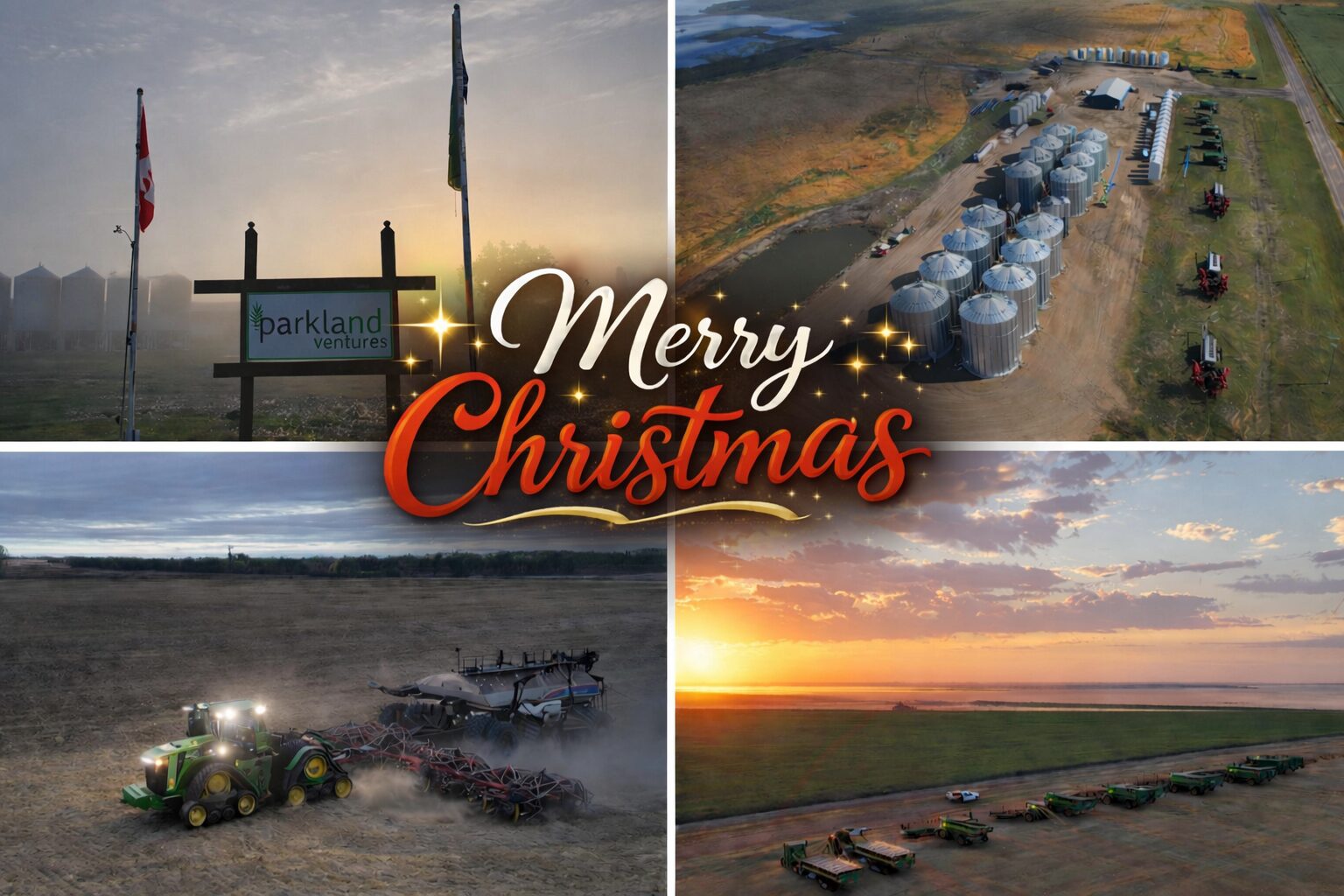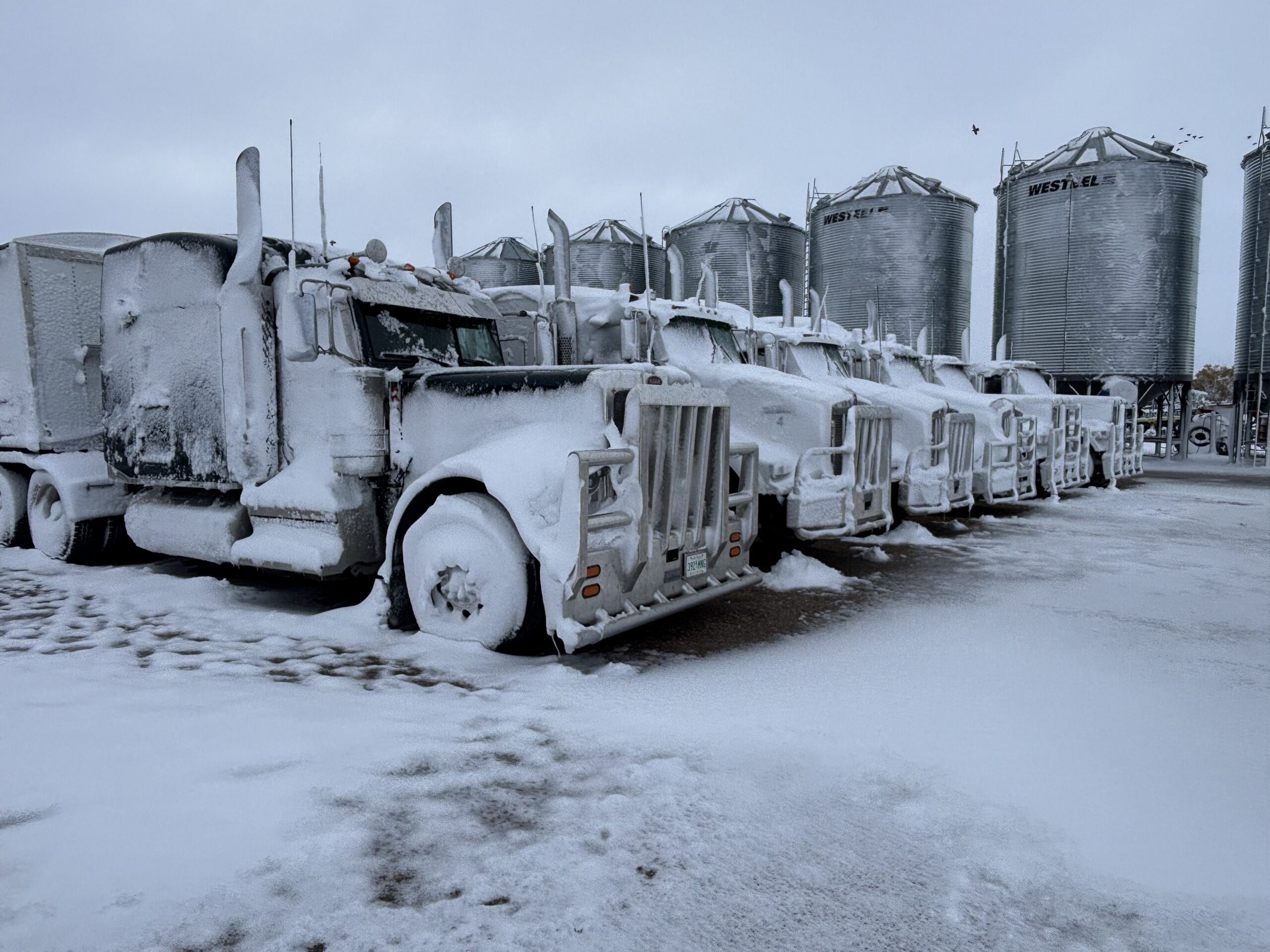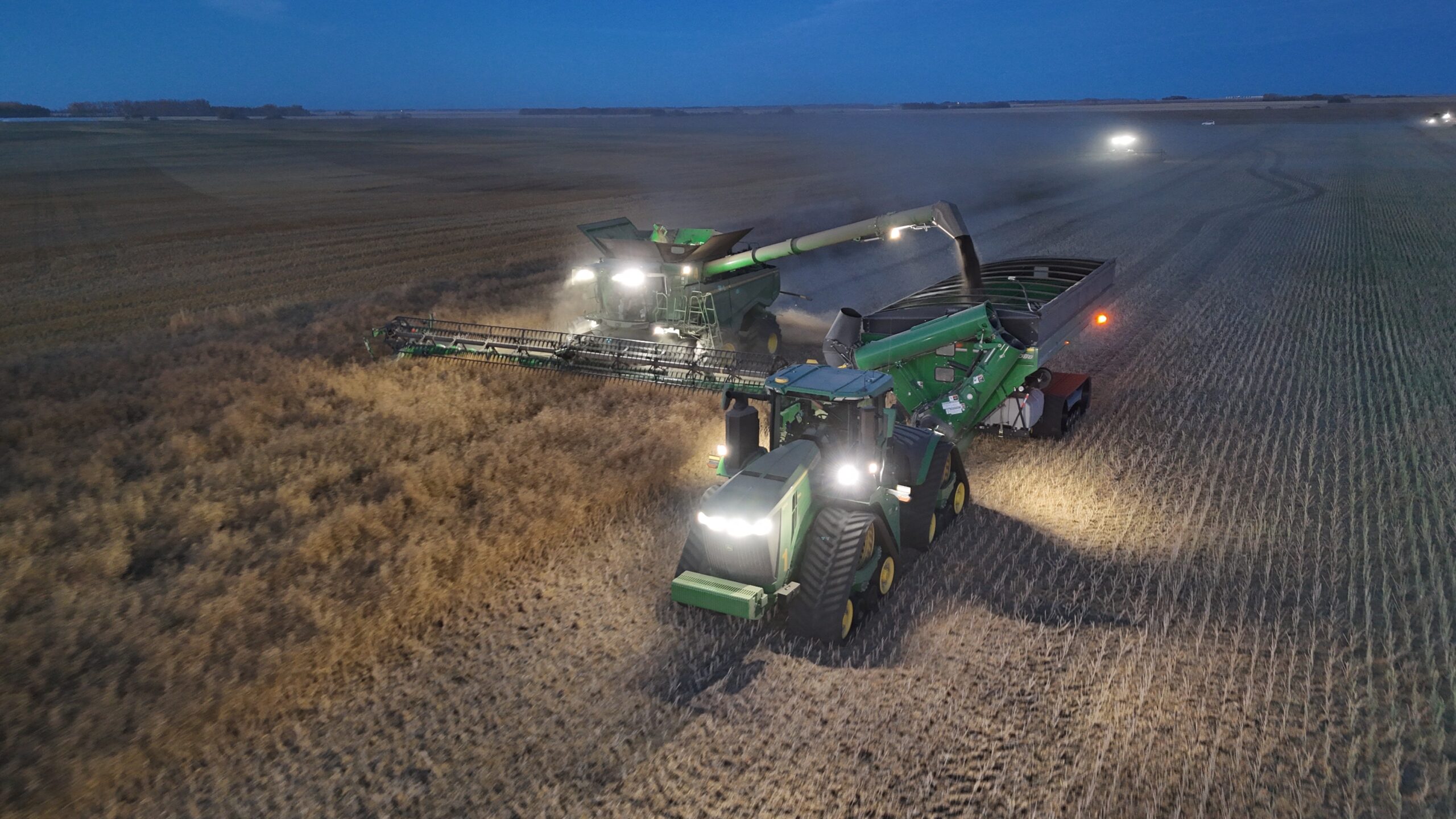For the week of September 8th – 14th
We we able to finally get the oats done! Oats are a bulky product to deal with – high volumes and a lot of extra work/logistics for the grain cart operators and for the truckers taking back to the bin. When we finished the oats we were able to also get 30% of the wheat done as well – with quality looking to be excellent. All in we are 34% done harvest – with just wheat and canola left to go.
They were forecasting a major weather system to start impacting us on Thursday – but we were fortunate to get a couple of “bonus” days in on Friday and half of Saturday as well. Saturday mid afternoon we had some heavy showers move through – ended up with 5mm in south and 24mm up north. This was a major weather system – there were areas in SE Saskatchewan that ended up with 100-130mm in a 36 hour period! It also came with isolated hail. As I write this the storms are continuing to impact some areas today. We were on the tail end of the storm – with some areas 50km south of us receiving 50-75mm of rain. The moisture outlet from the Gulf of Mexico has finally opened up and that is carrying large amounts of moisture all the way up north. This usually starts to occur in early June – but these past few years it was blocked by a strong jet stream to the south of us. Hopefully now that it has opened up we will see a more reliable moisture pattern develop over the winter and into next spring.
This next week looks to offer sun and mild temperatures. Canola is always the first to dry – so we will be starting on our canola on Monday. As soon as the wheat is dry enough to handle (18% or lower) we will get back into our wheat. Canola doesn’t get impacted by weather the way that cereals do. Wheat can turn to feed if we have successive mositsure events after it has already matured. It causes the seed to start the sprouting process – which releases an enzyme that lowers the falling number. Falling number is simply the time it takes for wheat that is ground up and put into a solution of water – for it to completely settle. Think of it like a loaf of bread – the higher the falling number, the higher the loaf will rise. With a lower falling number, the bread will not rise as much, and there will be large holes when cut open. If you end up getting more jam on your hands then you do on a piece of toast – it was probably from bread that was produced with wheat flour that had a lower falling number.
This past week we also had the pleasure of hosting a tour group from Germany. This has become an annual tradition – a bus full of European farmers / farm enthusiasts who drive across Western Canada to visit farms during harvest. Always a pleasure to host tour groups and show a little about farming in NE Saskatchewan. If anyone is ever interested in a tour don’t hesitate to reach out!





